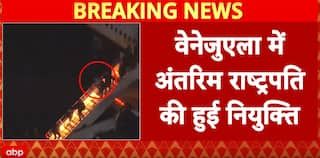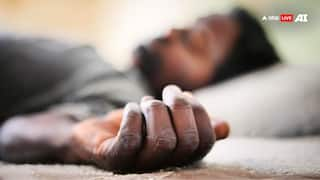Rare Disease Day 2023: What Are Rare Blood Diseases? Here’s How They Can Be Treated
Rare Disease Day 2023: Having affected about a fifth of the world population, the burden of blood-related rare diseases, especially Thalassemia, is huge in India.

By Patrick Paul
Rare Disease Day is observed every year on February 28. It is a global health day with an aim to raise awareness and for generating change to the 300 million people worldwide living with a rare disease.
Having affected about a fifth of the world population, the burden of blood-related rare diseases, especially Thalassemia, is huge in India. Over 10,000 children are born with thalassemia major, and over 7,000 cases are diagnosed with aplastic anaemia every year. With over 42 million carriers, India is also known as the Thalassemia Capital of the world.
A disease is considered rare by WHO when it affects one person out of 1000 or less. There are between 5000 and 8000 rare diseases, most of them genetic in nature and particularly impact children causing 35% of deaths before the age of 1 year and 10% between the age of 1-5 years and 12% between 5-15 years. Every country has their own definition of rare disease that suits their specific requirements, and according to the Indian Council of Medical Research (ICMR), a rare disease is one that affects one in 2,500 people or less in India.
India in a bid to further its agenda as a welfare state has gone on to introduce the National Policy for Rare Diseases 2021 (NPRD) which is based on the principle of inclusion as enshrined in our constitution’s directive principles of state policy. The policy is aimed at lowering the cost of treatment of rare diseases while increasing the focus on indigenous research and local production of medicines.
Rare blood diseases can be treated
Life-threatening blood diseases such as Thalassemia, Aplastic Anaemia and Sickle cell diseases can be treated through stem cell transplants. In a stem cell transplantation, healthy blood stem cells from a matching donor are infused into the patient to help resume healthy blood production.
How are donors and patients matched?
Donors and patients are matched by their HLA type. The best stem cell transplant outcomes happen when a patient’s human leukocyte antigen (HLA) and the HLA of a potential donor registered with a stem cell registry closely match. This is much more complex than matching blood groups. A simple cheek swab helps to determine whether a potential donor is a close match for a patient. About 30% of patients find an HLA matched donor within the family; however, the rest of the patients have to look for a matched “unrelated” donor.
What is HLA Type?
Human Leukocyte Antigen (HLA) is a protein – or marker – found on most cells in your body. Your immune system uses HLA markers to know which cells belong in your body and which do not. There are many HLA markers that make a person’s tissue type unique; however, matching certain markers is what is critical to a successful transplant.
Underrepresentation of Indians in the global donor pool
As the number of patients increases every year, the number of transplants has been increasing proportionately. But the problem is, due to the lack of awareness and general misconception about stem cell transplants in India, there are only 0.04 per cent of the population that are registered as potential blood stem cell donors. There are many patients who are in dire need of an unrelated donor for a lifesaving stem cell transplant. This makes it very difficult for a patient to be able to find an HLA matched donor. Therefore, more young individuals should come forward and register as potential lifesavers.
Registration process
Any healthy Indian citizen between 18-55 years can register as a potential stem cell donor with a stem cell registry. Registration is a simple process where all you need to do is register through the online portal of a stem cell registry and you will receive a DIY home swab kit. Once you get the kit, you have to take a cheek swab sample, fill the given consent form and return it to the registry. A specialised laboratory will then analyse your HLA (tissue type) and your details will be available in the global search for blood stem cell donors. Once you come up as a match, blood stem cells will be obtained using a procedure called Peripheral Blood Stem Cell Collection, which is like a blood platelet donation wherein only your stem cells are taken. This is a very safe, non-surgical outpatient process.
[The author is the CEO of DKMS BMST Foundation India, a non-profit organisation dedicated to the fight against blood cancer and other blood disorders, such as thalassemia and aplastic anaemia.]
(Disclaimer: The opinions, beliefs, and views expressed by the various authors and forum participants on this website are personal and do not reflect the opinions, beliefs, and views of ABP News Network Pvt Ltd.)
Check out below Health Tools-
Calculate Your Body Mass Index ( BMI )
Calculate The Age Through Age Calculator





































